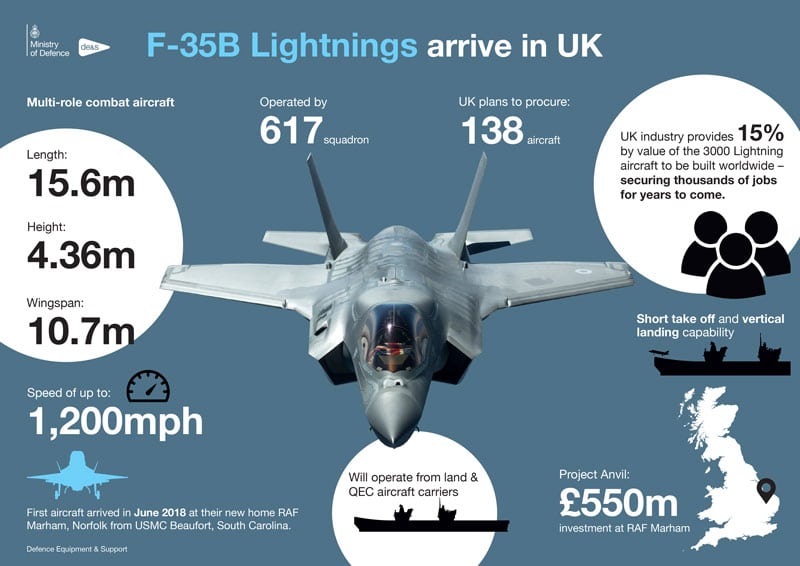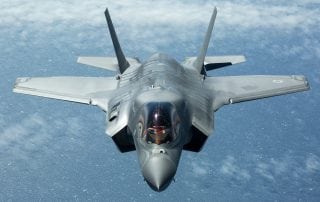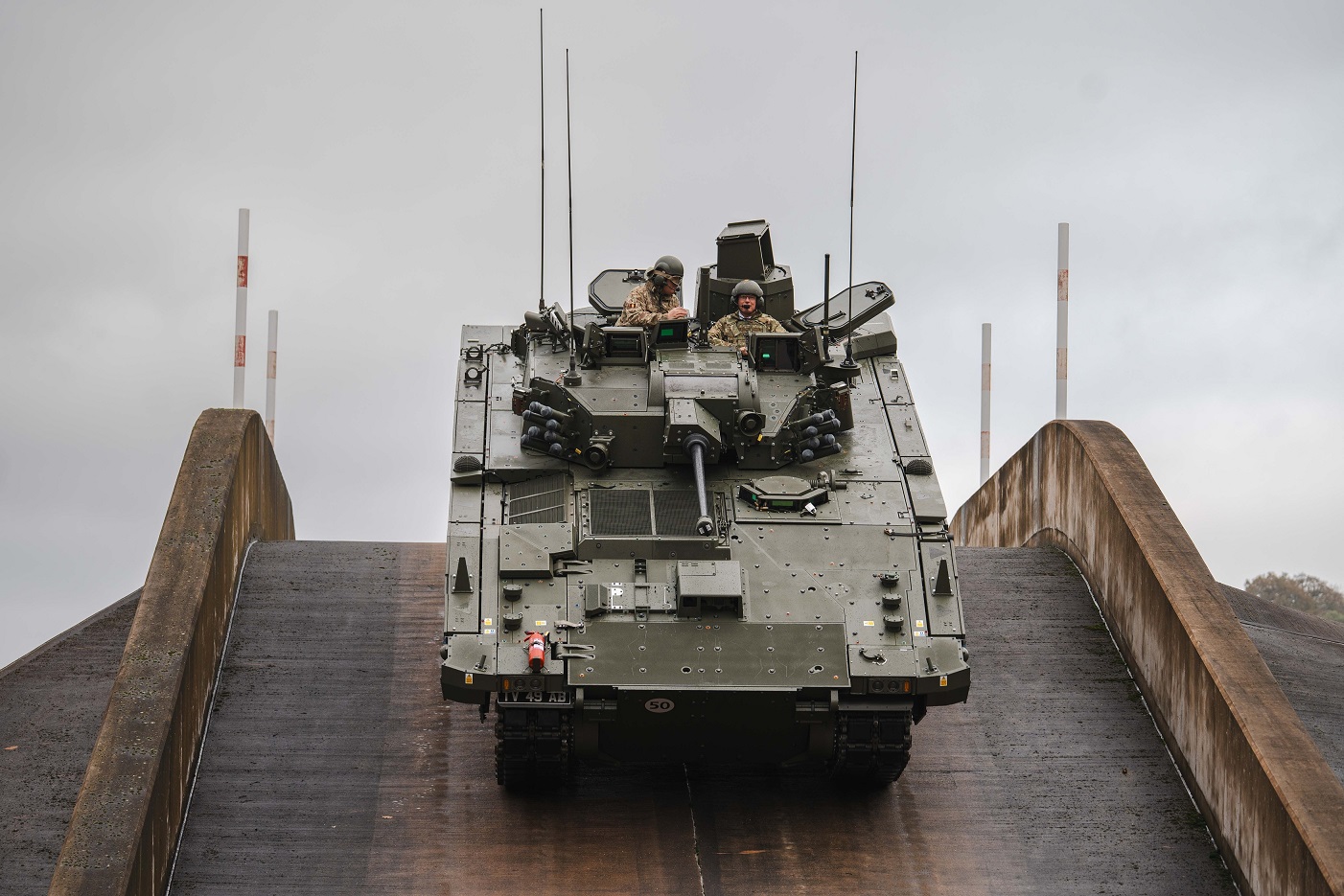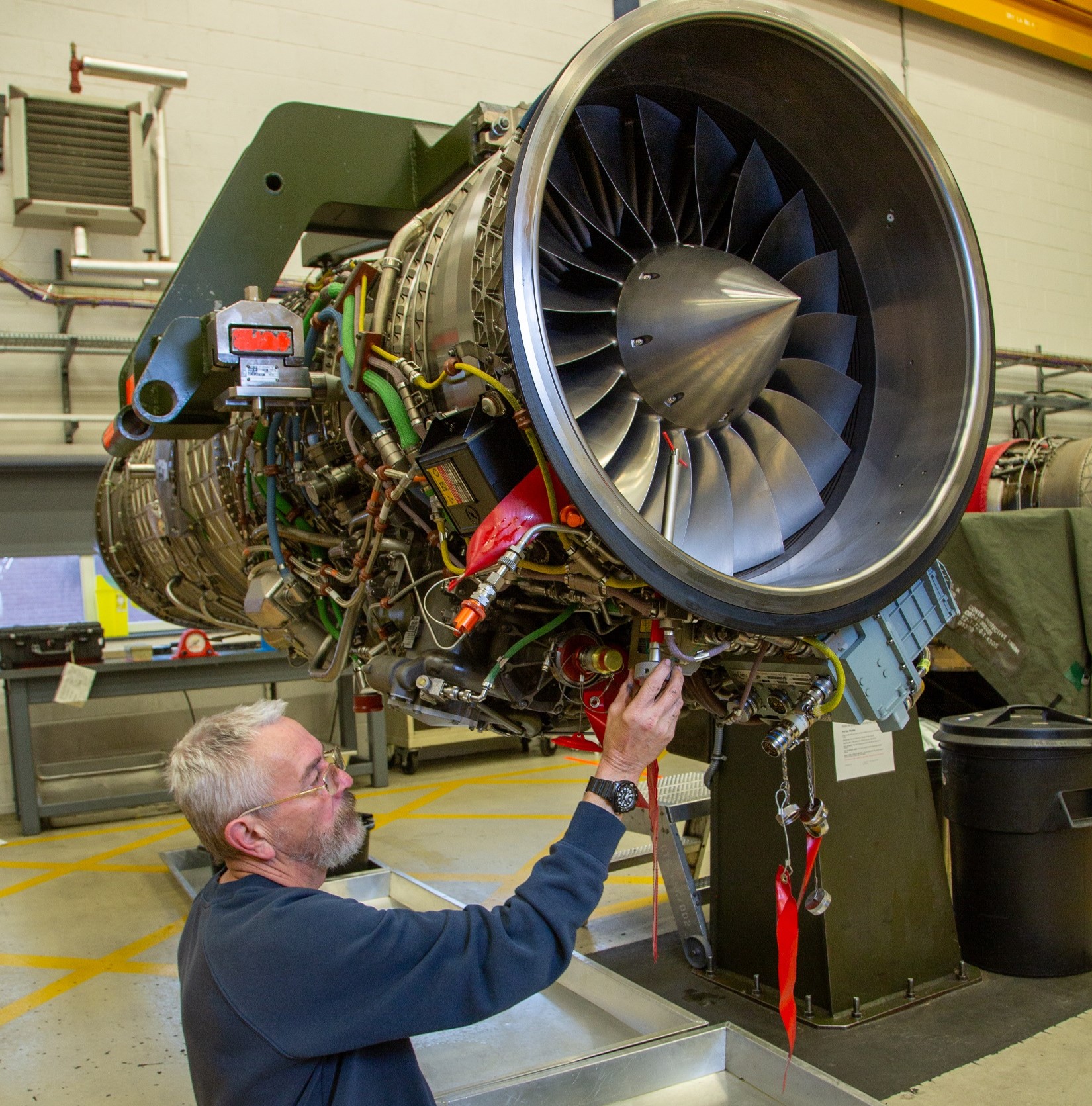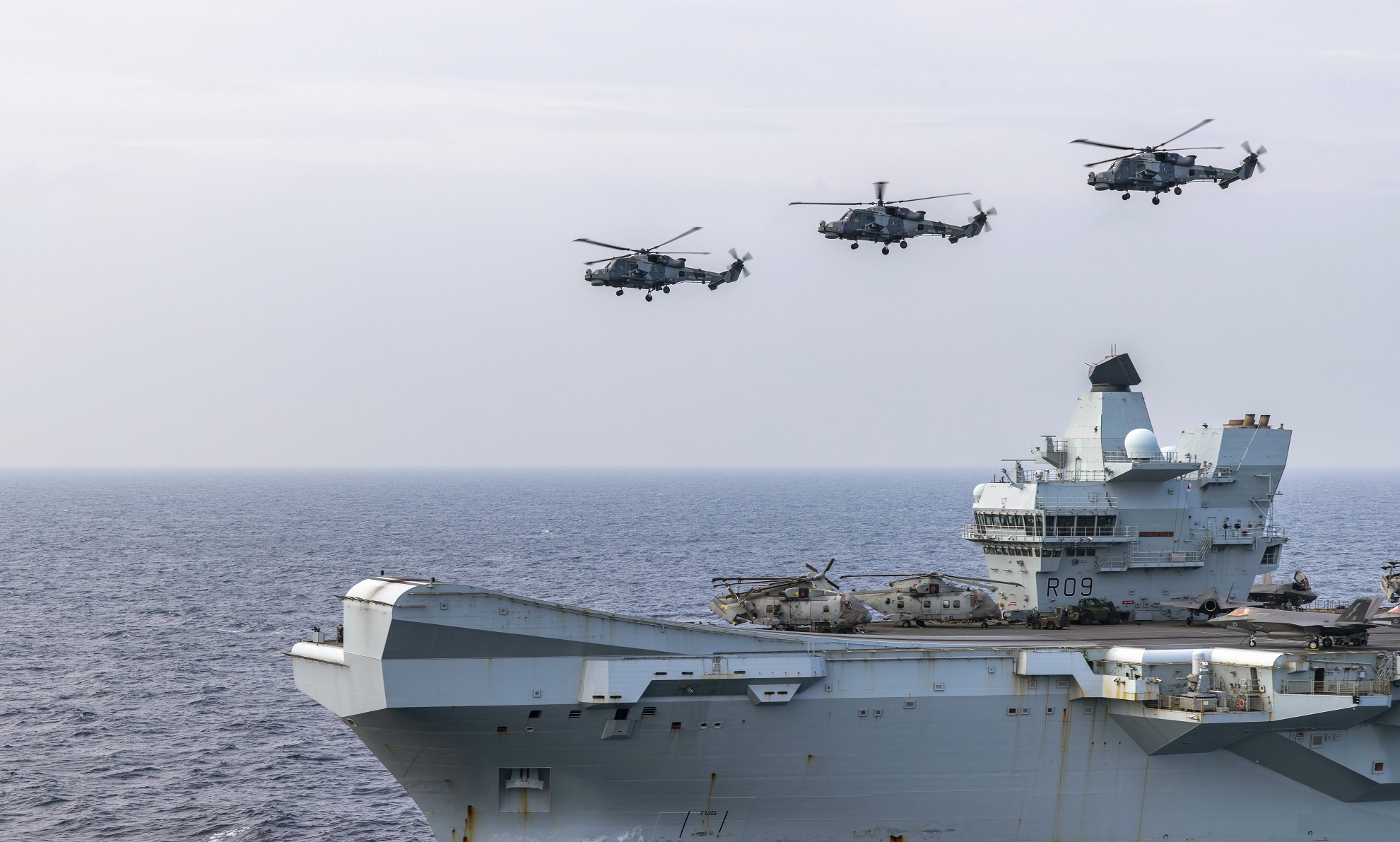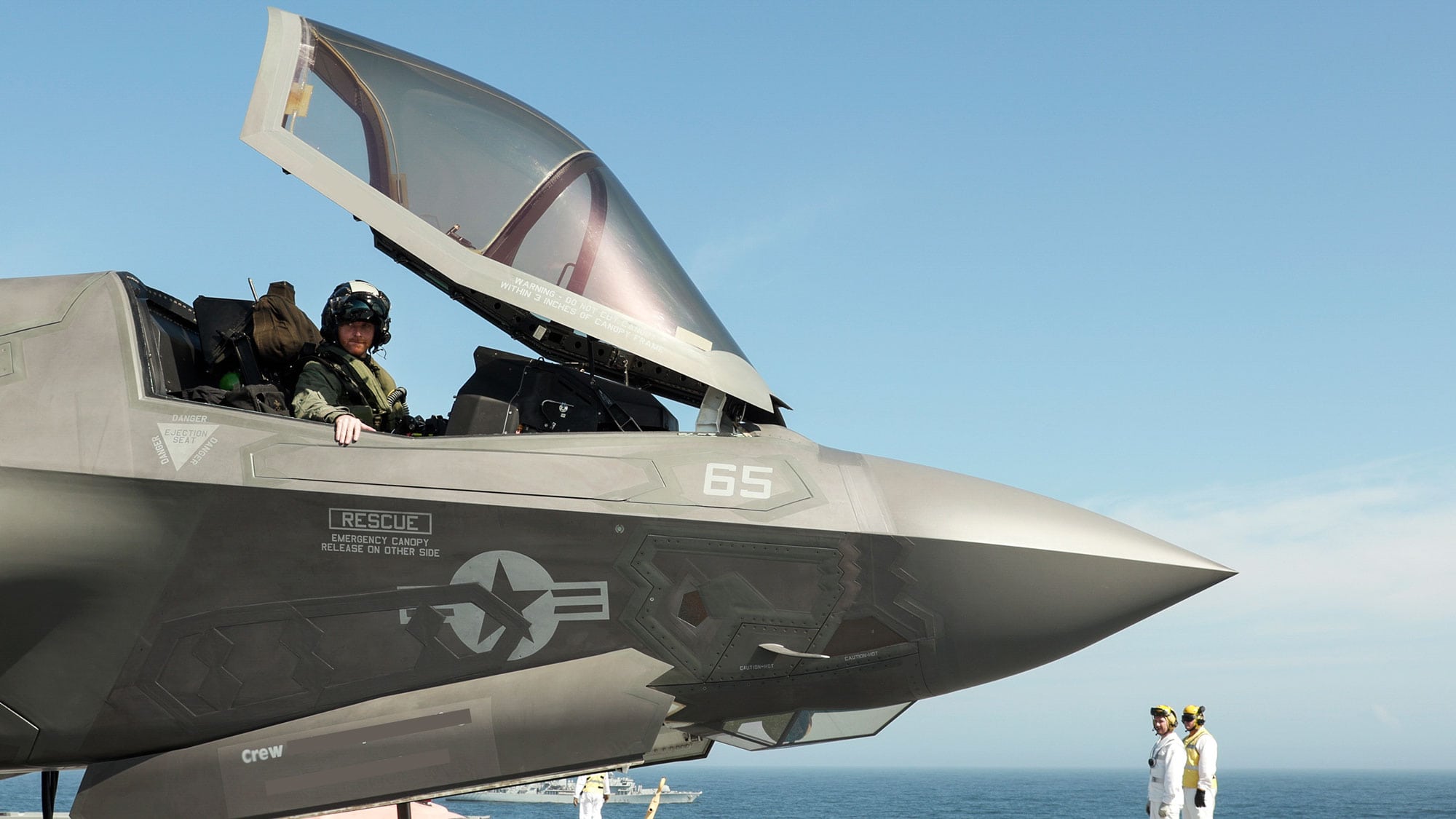
- F-35s have landed on Queen Elizabeth Class aircraft carrier for the first time.
- The landings mark the start of more than 500 take-offs and touch-downs set to take place from the mammoth warship.
- The flight trials are expected to take around 11 weeks.
Published 28th September 2018.
Share this story
The first F-35 Lightning fighter jets have landed on the deck of the United Kingdom’s new aircraft carrier, making history and marking the beginning of more than half-a-century of ‘Carrier Strike’ operations.
Royal Navy Commander Nathan Gray and RAF Squadron Leader Andy Edgell were the first pilots to land their stealth F-35 Lightning fighter jets on board the carrier, demonstrating the formidable force HMS Queen Elizabeth and her fleet of jets will be.
The first landings and take-offs from HMS Queen Elizabeth are the culmination of a national endeavour lasting more than a decade to bring an aircraft carrier back to the UK’s arsenal. Able to embark up to 24 of the supersonic jets, the carrier provides the Royal Navy with a capability possessed by few others.
Defence Secretary Gavin Williamson said:
“The largest warship in British history is joining forces with the most advanced fighter jets on the planet. This marks a rebirth of our power to strike decisively from the seas anywhere in the world.
“The historic first landing on the deck of HMS Queen Elizabeth is a monumental moment in our country’s proud military history. It is also a statement of Britain’s determination to promote peace and prevent war.”
The landings mark the start of more than 500 take-offs and touch-downs set to take place from the mammoth warship during the next 11-weeks, with the jets being put through their paces in a range of weather conditions.
F-35 video centre
Watch the F-35 in action – from a plotted history of the fighter to its first landing on UK soil.
Capable of flying at 1,200mph, the arrival of F-35s to the UK marks the start of 5th Generation of fighter planes for the Royal Air Force and Royal Navy. Take a fly through the history of the UK’s iconic fighters.
The first four of Britain’s new F-35B Lightning fighter jets arrive at RAF Marham and we spoke to the Minister for Defence Procurement Guto Bebb for his reaction.
Hear from Air Chief Marshal Sir Stephen Hillier about what this means for the Royal Air Force & Royal Navy and the collaborative effort behind their delivery.
British Army Platoon Commanders and Platoon Sergeants underwent the Live Firing Tactical Training course in Brecon, which simulates realistic live firing in a battle setting.
The return of ‘Carrier Strike’ to the UK comes eight years after a fighter jet last landed on a British carrier.
While the HMS Queen Elizabeth Class carriers will be able to project British military power across the globe for the next half-century, they can also provide humanitarian relief, deepen defence relationships with key allies and provide critical support to our forces as they are deployed across the world.
In recent operations, US aircraft carriers like the USS George HW Bush and USS Harry S. Truman have played a central role in the Gulf and the Mediterranean, conducting strikes against Daesh in Iraq and Syria.
This week’s historic flight trials come more than 100 years after the UK’s HMS Argus became the world’s first carrier capable of safely launching and recovering naval aircraft.
The ship will go on to continue her programme off the US east coast. The flight trials are expected to take around 11 weeks, during which time the ship is also expected to call into New York.
HMS Queen Elizabeth remains set to be deployed on global operations from 2021. Britain now has sixteen of a planned 138 F-35 Lightning jets as part of its world-leading fleet of military aircraft.

